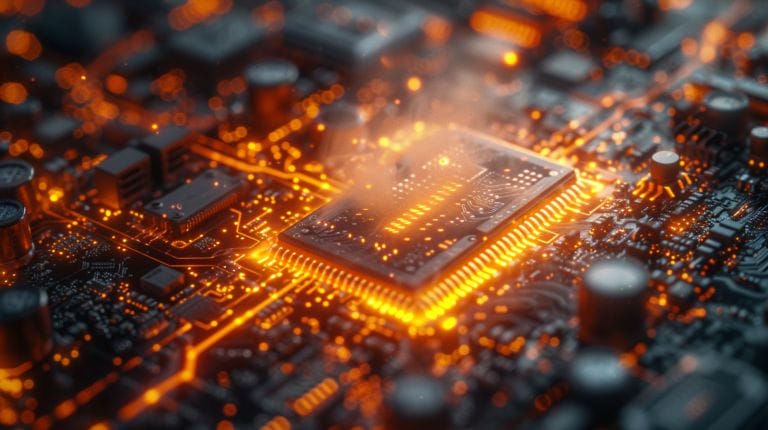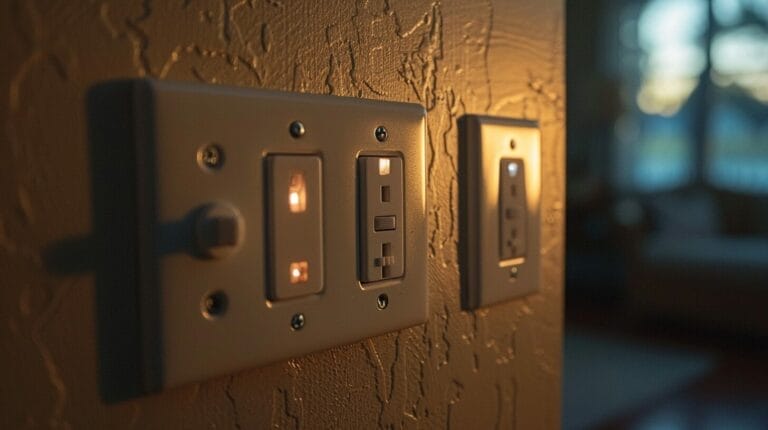How Many Amps Does an LED Light Use? Energy Efficiency Explained
When we think about upgrading our lighting to LED, understanding how many amps these lights use becomes important. LEDs typically consume between 0.1 to 0.3 amps, much less than traditional incandescent bulbs. This efficiency not only reduces our electricity bills but also has broader implications for energy conservation. But how do factors like wattage and circuit voltage influence the exact ampere usage of LEDs? And how can we make sure we’re selecting the most efficient option for our specific needs?
Let’s explore these questions to better harness the benefits of LED lighting.
Key Takeaways
- LED bulbs typically consume between 0.1 to 0.3 amps, offering significant energy efficiency.
- LED lights draw less power compared to traditional incandescent bulbs, lowering energy consumption.
- Factors like wattage and circuit voltage influence an LED light’s ampere consumption.
- Choosing LEDs with low amp consumption can reduce energy bills and environmental impact.
- Proper load management ensures safe and efficient LED light installations, preventing circuit overload.
Understanding the Power Specifications of LED Lights

To truly understand how LED lights work, we need to decode terms like amps and power ratings. These specifications are key to appreciating the energy efficiency that LED lights offer.
Power in electrical terms refers to the amount of energy a device consumes. For LED lights, this is often measured in watts, but amps play an equally vital role. Amps measure the flow of electric current — akin to the volume of water flowing through a pipe, while power (measured in watts) is the pressure of that water.
LED lights are energy-efficient, providing excellent illumination while consuming less power compared to traditional lighting solutions. As innovators, we should consider the power ratings of our LED lights, as they affect not only performance but also energy consumption and, subsequently, electricity bills.
How Many Amps Does a Typical LED Light Use?

A typical LED light bulb consumes between 0.1 to 0.3 amps, depending on its wattage and the voltage of the electrical system it’s connected to. For example, a 10-watt LED bulb running on a standard 120-volt circuit will draw approximately 0.083 amps. This shows impressive energy efficiency compared to traditional incandescent bulbs.
LED light bars, often used in automotive or outdoor settings, also exhibit low amp consumption. A 30-watt LED light bar on a 12-volt system will draw about 2.5 amps. These values highlight how LEDs not only save power but also allow for innovative applications where energy efficiency is paramount.
Factors like the bulb’s wattage, the efficiency of the LED’s driver circuitry, and the operating voltage influence the ampere consumption of LED lights. By understanding these elements, we can appreciate why LEDs are a smart choice for reducing our energy footprint and optimizing power consumption.
Choosing the Right LED Light Based on Ampere Consumption

When selecting an LED light, considering the ampere consumption can help us maximize energy efficiency and meet our specific lighting needs. Knowing how many amps an LED light uses allows us to choose the most energy-efficient options available.
For instance, if we need lighting for a large space, opting for LED light bars with lower amp consumption means we can illuminate the area without greatly increasing our energy usage. This reduces our electricity bills and minimizes our environmental footprint.
Furthermore, understanding the energy consumption helps us tailor our lighting solutions to specific applications, whether it’s accent lighting, task lighting, or decorative fixtures. This ensures that we choose products that deliver top performance without unnecessary energy waste.
Installing LED Lights: Amps and Load Considerations

Installing LED lights requires a solid understanding of ampere usage and load management to ensure both safety and efficiency. Mismanaging the load can lead to overheating or circuit damage, which contradicts our energy efficiency goals.
Every LED light has a specific ampere rating. For instance, a 4-amp LED light bar requires careful evaluation of the existing electrical load. If we’re adding this to a circuit already at its limit, we risk overloading. Hence, we must calculate the total amperage of all devices on the circuit and ensure it doesn’t exceed the circuit breaker’s capacity.
We should also use appropriate wiring and connectors to handle the combined amperage safely. Taking into account both the peak and continuous loads enhances energy efficiency and ensures the longevity of our LED installations.
The Good, the Bad, and the Bright: Making the Most of Your LED Lights

LED lights are known for their low ampere consumption, which results in significant energy savings and efficiency. However, to fully utilize these innovative lights, we must navigate some challenges while reaping the benefits.
Advantages of LEDs include low ampere consumption, long lifespan, energy efficiency, and being environmentally friendly. Potential drawbacks encompass their initial cost, light quality variability, heat dissipation, and compatibility with existing fixtures.
First, let’s break down the good and the bad:
| Advantages | Potential Drawbacks |
|---|---|
| Low Ampere Consumption | Initial Cost |
| Long Lifespan | Light Quality Variability |
| Energy Efficiency | Heat Dissipation |
| Environmentally Friendly | Compatibility with Existing Fixtures |
Despite the initial cost, the long-term savings on energy bills and replacement costs compensate for this. To mitigate drawbacks like light quality variability and heat dissipation, we should opt for high-quality LEDs and ensure proper ventilation in installations.
Conclusion
To sum up, grasping the power specifications and amp consumption of LED lights helps us make informed, energy-efficient choices. By paying attention to wattage and circuit voltage, we can guarantee we’re getting the most out of our LED lighting.
With their low amp usage, LED lights not only save energy but also reduce our electricity bills. Let’s embrace the benefits of LED technology and brighten our spaces sustainably.
Frequently Asked Questions
How many amps does an LED light use compared to a regular bulb?
An LED light typically consumes much fewer amps compared to a regular bulb. For example, a standard 120-watt bulb may draw approximately 10 amps, whereas an equivalent LED light bar might only draw around 4 amps.
Can I directly substitute a 120-watt bulb with a 12-volt LED fixture?
No, you cannot directly substitute a 120-watt bulb with a 12-volt LED fixture without considering the electrical requirements. You can calculate the amps by dividing the wattage by the voltage – in this case, it would be 120 watts divided by 12 volts, resulting in 10 amps.
Are LED lights more energy efficient than traditional bulbs?
Yes, LED lights are known for their high energy efficiency. They consume less power and can produce the same amount of light, if not more, than traditional bulbs, making them a popular choice for energy-conscious consumers.
Do LED lights require special circuit protection or battery considerations?
LED lights are highly efficient and do not usually require additional circuit protection or special battery considerations. However, it is always advisable to follow the manufacturer’s guidelines to ensure proper installation and performance.
What is the power consumption of a typical LED light bar compared to a traditional bulb?
A 30-watt LED light bar may consume significantly less power than a 120-watt traditional bulb. The LED’s energy-efficient design allows it to produce the same or even more light output while drawing fewer amps, making it a cost-effective and environmentally friendly lighting option.







